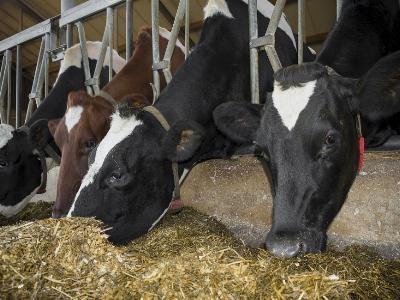Crude protein levels low in 2016 silage crops

In the first and second cuts of 2016's silage crops, average crude protein levels are 14.1 and 14.2 percent, respectively. | hansenn, Bigstockphoto.com
Find out how to create the best quality silage
The crude protein levels in 2016’s silage crops are two percent below the target of 16 percent, according to experts.
In the first and second cuts, average crude protein levels are 14.1 and 14.2 percent, respectively.
“The increasing cost of fertilizer is likely to be a catalyst for low crude protein levels, which we’ve seen dropping over the last 10 years,” said Dr. Dave Davies of Silage Solutions Ltd. in a press release. “Sufficient nitrogen is essential to boost protein in the grass but producers have tended to cut back on its application and consequently, we’ve seen a knock-on effect, with grass crops lower in protein than they could be.”
Silage-based rations require careful balancing in order to deliver optimum feed efficiency and performance in the animal.
“To get the most out of silage this year, it’s important that the diet is correctly balanced to deliver adequate rumen degradable protein, as well as rumen undegradable protein, and energy,” said Dr. Helen Warren, European technical manager at Alltech, in the press release.
Warren said this year’s silage is wetter than last year’s, with the second cut wetter than the first.
“It’s important to remember that if the silage is wetter, the animal will get less protein per kilogram of fresh silage intake, which may further increase the need for supplementation,” she said.
Tips for the best quality silage
WATTAgNet Nutrition Editor Ioannis Mavromichalis, in a previous article, offered tips to ensure the best possible quality for corn silage:
- Control silage moisture at harvest
- Harvest mature corn and add molasses to improve lactic acid fermentation
- Add organic or inorganic acids
- Seek the expert opinion of an agronomist to determine the preferred harvest time
- Add alpha-amylase, an enzyme that converts starch into glucose (a simple sugar that can be used by lactic acid producing bacteria), to improve fermentation; or urea, an inexpensive source of readily available nitrogen, to provide lactic acid bacteria with material to build up protein so they can grow and thrive.
Related news
Heat stress is a natural phenomenon that affects dairy cows and other domestic animals in tropical, sub-tropical and often in temperate regions of the world
 Climate change increasing heat stress in dairy cows
Climate change increasing heat stress in dairy cows Dairy cows in traditionally cooler climates may have to cope with the effects of climate change – leaving producers combating the effects of heat stress.
 Live yeast helps manage heat stress in dairy cows
Live yeast helps manage heat stress in dairy cows Rumen modifiers, such as live yeast, can help alleviate the drawbacks of heat stress on digestive comfort and help preserve dairy performance